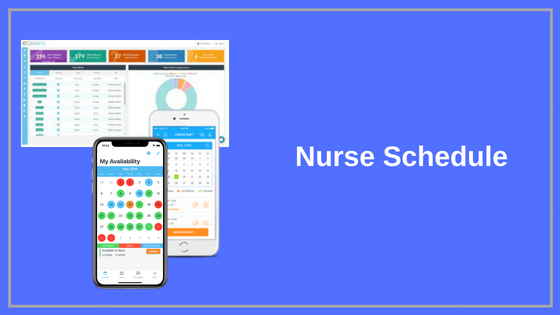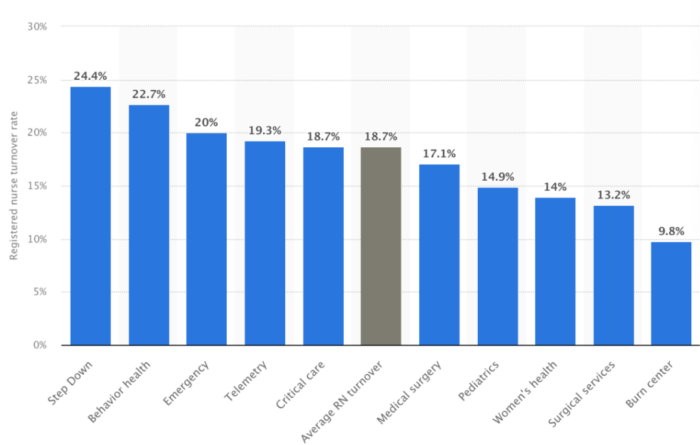


Nursing is a demanding profession, requiring both physical stamina and emotional resilience. But one of the biggest challenges is managing a registered nurse work schedule. The nature of healthcare often calls for long hours, varied shifts, and the ability to adapt quickly to different work environments.
RNs are critical in the healthcare system, providing patient care, administering medications, and coordinating with doctors and other healthcare staff. Their work is vital to the well-being of patients, and that responsibility often translates into long and irregular hours. Despite the unpredictability, achieving a good work-life balance is crucial for nurses to prevent burnout and ensure the best patient outcomes.
The average nursing schedule is typically a combination of all of these types of nursing shifts. Each type of nursing shift has its advantages. Working 10 or 12-hour shifts means a registered nurse only works a few days a week. This gives them more flexibility, days off during the week, and the ability to rest more.
Working 8-hour nursing shifts offer a shorter workday, while also offering a little more stability in your schedule. This will allow nurses to make plans and know their schedule in advance. Occasionally an RN won’t have a choice in the shift they are scheduled for, and some facilities may require them to work night and day shifts.

Working with a manual nurse schedule process, the manager of the ward needs to estimate the right number of nurses that are necessary to work during each day of the month, from there they can divide these days into working shifts and staffing demands for each of these shifts. The manager is also responsible for deciding what kind of nurses need to be employed and what kind of shifts they should work. Traditional staffing methods used to be valuable for healthcare organizations, but now with newer online tools, healthcare organizations are able to do a better job helping to balance hospitals focusing on staff’s needs.
CliniShift can significantly help hospitals overcome the staffing challenges they face. The challenges include a nurse shortage, a lack of full-time employee commitments, overruns in labour costs, burnout among available staff, and so on. Our software automates nursing work schedules and healthcare organizations can utilize and generate data that produce better shifts in a more flexible format. Health systems are taking advantage of nurse scheduling tools that are available in online applications, which can be easily installed. Once nurses start using these tools other departments often demand them as they can offer a significant return on investment for the organization.

A nurse’s main responsibility is to offer care to all patients and to provide information about their health while they are in the hospital or over the phone when it is necessary. Nowadays, nurses spend a lot of time recording healthcare related documents trying to improve care co-ordination. Manually designed rosters are time-consuming and consequently, this brings poor scheduling for staff.
Automated scheduling reduces time and costs included in manual rosters and has the potential to produce more convenient schedules, thereby improving the contentment and effectiveness of the workforce, and thus staff retention.
The effectiveness of an automated registered nurse work schedule includes better flexibility than in the past and also an understanding that one-size scheduling does not suit all staff. Nurses need more flexibility and automated schedules that balance home and work life. Automated schedules can also lead to improvements in the organization’s resource efficiency, staff and patient safety, and improves registered nurse retention.

CliniShift automated scheduling improves coherence throughout your organization. Our enterprise solution overcomes the antiquated manual processes used within the healthcare industry, which reduces costs by streamlining the communication between management and staff. CliniShift connects the entire health system from managers, nurses, and doctors.
Our robust scheduling software provides a cost-effective solution to enhance productivity and reduce the time required to fill an open shift. It increases the manager’s ability to focus on other areas of operations, removing unnecessary communications with staff on a daily basis. Thus, avoiding tiresome phone calls, text messages, and group messaging.
Reference: Sabet, L. (2005) ‘Adopting Online Nurse Scheduling and Staffing Systems’, California Healthcare Foundation, 28 Sep. Available at: https://www.chcf.org/wp-content/uploads/2017/12/PDF-AdoptingOnlineNurseSchedulingAndStaffing.pdf

What schedule do most nurses work?
12-hour shifts are a standard nursing work schedule for organizations requiring around-the-clock care for patients. Shifts can run from 6 am – 6 pm or 7 am – 7 pm and a night team will come in to work 6 pm – 6 am. This means there is always a full team onsite.
Do nurses pick their schedules?
Yes, in certain cases, nurses can pick their schedules. CliniShift gives control back to nurses giving them the flexibility to mark their availability for open shifts weeks or even months in advance. This allows them to manage their schedules, giving them the freedom to plan personal time and pick up additional shifts when needed.